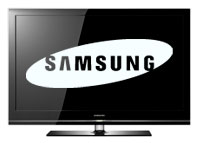|
EN
|
|
|||||||||||||||
|
WHOLESALE DISTRIBUTOR OF COMPUTER HARDWARE AND CONSUMER ELECTRONICS
|
||||||||||||||||
|
||||||||||||||||
Samsung Ushers in New Era for Flat-Panel Television with New Category Line-Up of LED LCD HDTVs Samsung Elecrtronics, a market leader and award-winning innovator in consumer electronics, raises the bar for flat-panel TVs everywhere with the launch of an entirely new line-up of advanced LED HDTVs. Samsung Elecrtronics, a market leader and award-winning innovator in consumer electronics, raises the bar for flat-panel TVs everywhere with the launch of an entirely new line-up of advanced LED HDTVs.The new 7000 and 6000 Series build upon the success of Samsungs first and second generation LED HDTV models. These cutting-edge TVs use LEDs as their primary light source, rather than traditional Cold Cathode Fluorescent Lamps (CCFL). Benefits of using LEDs include ultra-high contrast ratios, slim depths that allow for more artful designs, plus increased energy savings. In addition, a variety of state-of-the-art networking features give the ability to adapt to how consumers view and experience with shows, movies, games and other multimedia at home. Samsung has proven LED technology is a viable choice for consumers desiring the best picture possible from an LCD television. Samsungs latest LED televisions redefine the standards for viewing quality, energy-efficiency and home entertainment dcor, said Jonas Tanenbaum, Vice President of LCD HDTV Marketing at Samsung Electronics America. Samsung stays committed to developing technology and products that go beyond current expectations of value, quality and innovation. And, we are excited to be a part of this exciting point in TV evolution. Top-Notch Picture Quality Each of the two Samsung LED HDTV Series for 2009 boast high dynamic contrast ratios, complements of Samsungs ground breaking LED light source. Compared to a traditional CCFL, LEDs produce darker blacks that appear endlessly deep to the eye. Whites also remain crisp and bright with vivid colors. The result is picture quality that measures up to the natural beauty of life. For instance, Samsungs Wide Color Enhancer Pro feature lets consumers enjoy a broader color palette. The Ultra Clear Panel further allows the preservation of every detail even in brightly-lit, imperfect viewing conditions. This is done by effectively allowing more light to pass through the screen and simultaneously reducing reflections from ambient light. And with an adaptive Natural mode, Samsungs LED HDTVs can combine the recognized brightness advantage of LCD displays with the cinema-like viewing experience of plasma displays by automatically optimizing picture settings. Samsungs entire LED HDTV line-up incorporates a number of innovative features to reduce the motion blur and image judder, which traditionally plague LCD HDTVs when displaying fast movement. All three series boast Samsungs acclaimed Auto Motion Plus frame interpolation technology. The 7000 and 6000 Series, with a quick 120Hz refresh rate helps ensure crisp, easy viewing of sports, video games and movies. Expansive Networking and Entertainment Possibilities In 2009, Samsung plans to redefine what it means to watch television with Internet@TV - Content Service Developed with Yahoo!, the Internet information interface will be available on a number of 2009-model Samsung HDTVs. Using either a wired or wireless Ethernet connection included in the 7000 Series, Internet@TV - Content Service lets consumers access content onscreen from Yahoo!, Flickr, YouTube and more with the push of a button. The widgets-based interface and scrollbar run along the bottom of the screen for easy browsing of the latest programs and content. Even after purchase, consumers will be able to enjoy a growing library of widgets, as the widget development kit will be open to content providers willing to create new offerings. The 6000 Series includes access to Samsungs InfoLink RSS service, which can instantly display updated news, sports, weather and stocks information with a touch of the remote. Beyond online entertainment, Samsungs LED HDTVs can also connect to a variety of other devices and content with ease. Included USB ports make viewing videos and photos from a camcorder, playing music from a media player or accessing multimedia files from a portable drive simple. The 7000 Series are available in 40, 46 and 52” size-formats, while the 6000 Series include 19, 22, 32, 37, 40, 46 and 55” formats. Both series will be available in the Russian market in the first half of 2009. Source: Samsung |